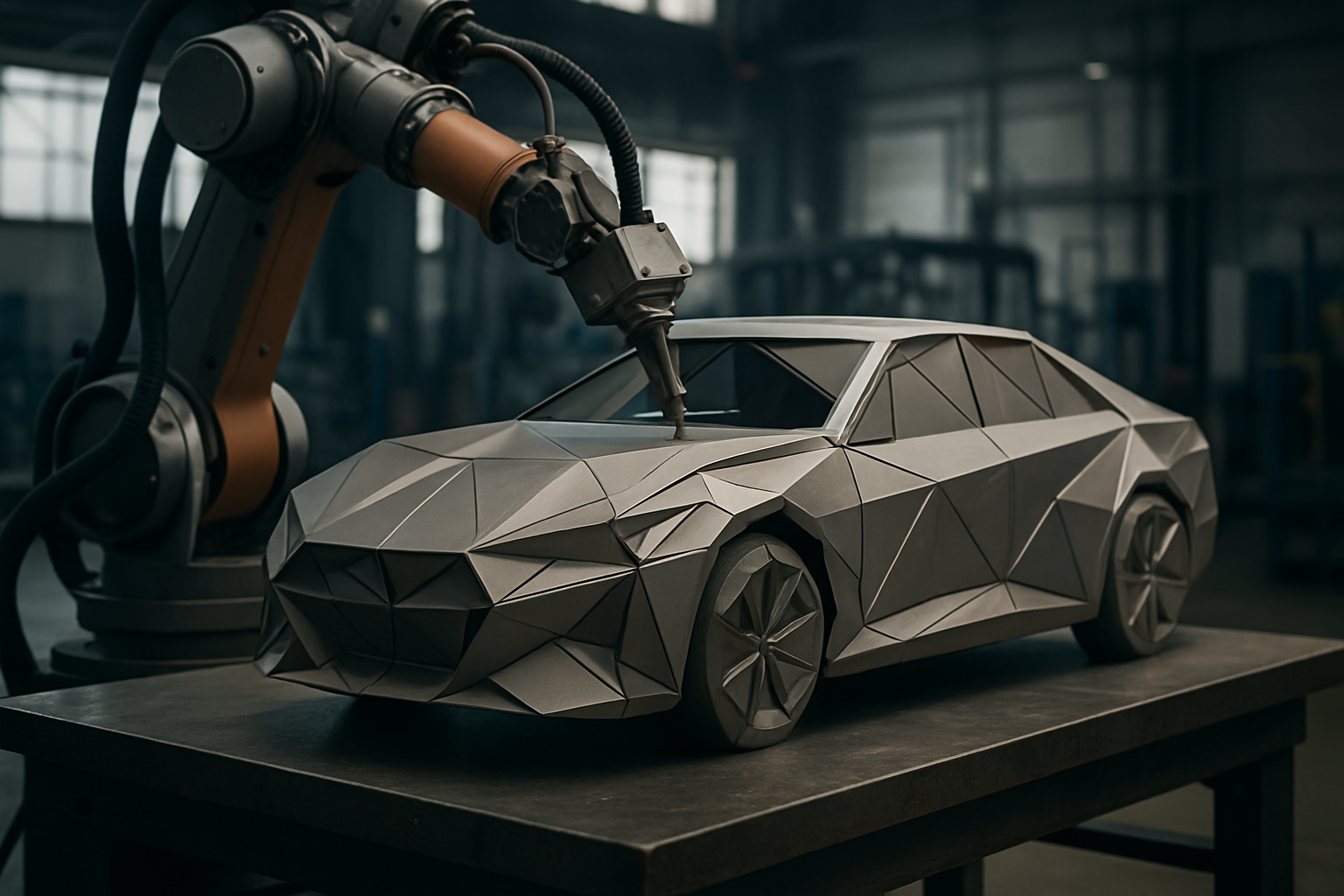Automotive Origami: The Art of Folding Car Bodies
In the ever-evolving world of automotive design and manufacturing, a surprising technique is gaining traction: origami-inspired folding car bodies. This innovative approach borrows principles from the ancient Japanese art of paper folding to create strong, lightweight, and flexible vehicle structures. As automakers seek new ways to improve safety, efficiency, and aesthetics, origami-inspired design is proving to be a game-changer in the industry.

Folding Patterns and Structural Strength
At the heart of origami-inspired car design lies the concept of folding patterns. These carefully calculated creases and folds allow for the creation of intricate geometries that can be both strong and lightweight. By incorporating these patterns into vehicle body panels, engineers can achieve remarkable improvements in structural rigidity without adding excessive weight.
One of the most promising applications of this technique is in the design of crumple zones. Traditional crumple zones rely on strategically placed weak points to absorb impact energy during a collision. Origami-inspired designs, however, can create structures that fold in a controlled manner upon impact, dissipating energy more efficiently and potentially improving occupant safety.
Manufacturing Challenges and Solutions
While the concept of folding car bodies is undoubtedly innovative, implementing it in mass production presents several challenges. Traditional stamping methods used in automotive manufacturing are not well-suited to creating the intricate folds required for origami-inspired designs. To overcome this hurdle, researchers and engineers are exploring new manufacturing techniques.
One promising approach is the use of advanced robotics and precision folding machines. These specialized tools can create complex folding patterns in metal sheets with a level of accuracy that was previously unattainable. Additionally, developments in materials science have led to the creation of new alloys and composites that are more amenable to folding without compromising strength or durability.
Lightweight Design and Fuel Efficiency
As automakers strive to meet increasingly stringent fuel efficiency standards, weight reduction has become a top priority. Origami-inspired car bodies offer a compelling solution to this challenge. By utilizing folding patterns, designers can create structures that are inherently strong yet remarkably light.
Studies have shown that origami-inspired designs can reduce the weight of certain vehicle components by up to 30% without sacrificing structural integrity. This weight savings translates directly into improved fuel efficiency and reduced emissions, making folding car bodies an attractive option for environmentally conscious manufacturers.
Aesthetic Possibilities and Design Freedom
Beyond the functional benefits, origami-inspired car design opens up a world of new aesthetic possibilities. The unique folding patterns create visually striking surfaces that can set a vehicle apart in a crowded market. Designers are embracing this new freedom, experimenting with bold geometric shapes and dynamic surface treatments that were previously impossible to achieve with traditional manufacturing methods.
Some concept cars showcasing origami-inspired design have already made waves at international auto shows, garnering attention for their futuristic and avant-garde appearances. As the technology matures, we can expect to see more of these eye-catching designs making their way into production vehicles.
Future Prospects and Industry Adoption
While origami-inspired car bodies are still in the early stages of development, the potential for widespread adoption is significant. As manufacturing techniques improve and designers become more adept at incorporating folding patterns into their work, we can expect to see an increasing number of vehicles featuring this innovative approach.
The benefits of origami-inspired design extend beyond passenger cars. Commercial vehicles, aerospace applications, and even architectural structures could all potentially benefit from the strength, lightness, and flexibility offered by folding designs. As research in this field continues to advance, we may be witnessing the beginning of a fundamental shift in how we approach structural engineering across multiple industries.
In conclusion, the art of folding car bodies represents a fascinating convergence of ancient artistic principles and cutting-edge engineering. By drawing inspiration from origami, automotive designers and engineers are pushing the boundaries of what’s possible in vehicle manufacturing. As this technology continues to evolve, it promises to deliver safer, more efficient, and strikingly beautiful cars that could reshape the automotive landscape for years to come.





